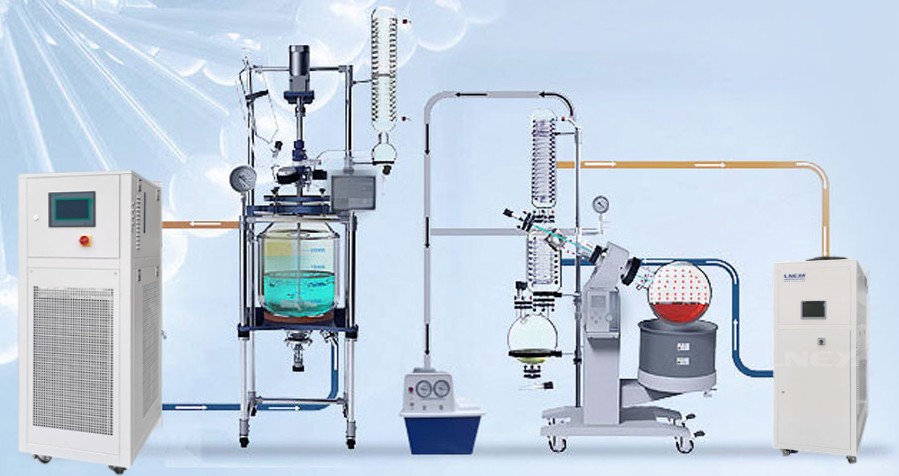Reactor Cooling System Installation — Common Chiller Mistakes to Avoid

- How to Upgrade an Old Chiller to Improve Efficiency
- Chiller Tanks Comparison Expansion Tank vs Buffer Tank
- Expansion Tanks in Semiconductor Chillers
- How Explosion-Proof Chillers Work Principles and Design
- Agosto 2025
- Julho 2025
- Junho 2025
- Maio 2025
- Março 2025
- Fevereiro 2025
- Janeiro 2025
- Dezembro 2024
- Novembro 2024
- Outubro 2024
- Setembro 2024
- Agosto 2024
- Julho 2024
- Junho 2024
- Maio 2024
- Abril 2024
- Março 2024
- Fevereiro 2024
- Setembro 2023
- Julho 2023
- Junho 2023
- Maio 2023
- Janeiro 2023
refrigerador arrefecido a ar refrigerador refrigeradores Congelador de montagem a frio refrigerador de refrigeração circulador de arrefecimento e aquecimento sistema de arrefecimento e aquecimento sistema de controlo dinâmico da temperatura congelador circulador de aquecimento industrial chiller industrial freezer frigorífico industrial jacket reactor refrigerador de baixa temperatura news pharmaceutical chiller process chiller reactor chiller reactor cooling reactor cooling heating aquecimento do reator arrefecimento bomba de circulação refrigerada refrigerador de parafuso refrigerador de semicondutores refrigerador de teste de semicondutores sundi tcu controlo da temperatura câmara de ensaio termóstato refrigerador de temperatura ultra baixa refrigerador de ensaio de veículos refrigerador de água refrigerador arrefecido a água
Is the reactor cooling system experiencing unstable temperatures after installation? Is your well-known brand refrigerador frequently alarming or tripping? Often, these issues stem not from substandard equipment performance but from minor installation errors. Even new equipment can exhibit erratic performance if improperly installed. Have you encountered any of the following common issues when installing a chiller?
Improper Coolant Piping Design
Many users underestimate how piping design affects cooling performance. A pipe diameter that is too small reduces flow, while excessive elbows, long runs, or chaotic routing increase resistance. Some users, for convenience, simply use existing piping. he chiller seems to work fine, yet the reactor cools down very slowly, making it difficult to achieve the desired target. Our engineers’ inspection revealed that the piping design failed to consider the impact of flow rate and velocity on cooling efficiency.
We therefore recommend prioritizing the use of materials and pipe diameters recommended by the chiller manufacturer when planning piping, minimizing elbows and shortening routing.

Insufficient Coolant Filling or Air Entrapment in the Loop
Many first-time users of sistemas de controlo dinâmico de temperatura make the mistake of insufficient coolant filling or air pocket within the system. This can lead to poor system circulation and frequent equipment alarms. If your chiller issues a low flow or high temperature alarm after just a few minutes of operation, or if there’s a significant temperature difference between the inlet and outlet coolant lines, consider whether the air was properly removed during the filling process.
Mismatch Between Chiller Capacity and Reactor Heat Load
When selecting reactor cooling equipment, some users ignore the heat load values calculated by experts and, to cut costs, make rough estimates based on the equipment’s power and reactor capacity. As a result, the chiller fails to reduce the temperature, even at full capacity. In processes with wide temperature ranges, insufficient capacidade de arrefecimento can prolong reaction times and affect product cooling. Therefore, heat load assessments from chiller suppliers are crucial.
Improper or Missing Grounding
Chillers are high-power industrial equipment with complex internal electrical systems. Without reliable grounding, the risk of leakage and electromagnetic interference is magnified, potentially leading to more serious consequences. Some projects have poor grounding conditions at the installation site, so they choose to directly connect the chiller casing to the ground. However, this practice poses significant safety risks. For the safety of equipment and personnel, the chiller must be grounded.

Improper Installation in Confined Spaces
Many laboratories and workshops are limited in space. To minimize space usage, some people install chillers in corners, under cabinets, or simply in storage areas. This is a common practice. In fact, last week, a customer called our after-sales technician to report that their refrigerador arrefecido a ar was unable to cool the reactants to the set temperature and frequently displayed over-temperature alarms.
Because it was summer, the technician considered the ambient temperature as too high. However, upon arrival at the site, we discovered that, to save space, the customer had ignored our installation instructions and installed the chiller in a tight, enclosed space under the stairs. This prevented the hot air from being exhausted and instead repeatedly sucked in and blown back onto the condenser, causing the equipment to shut down due to high-temperature alarms soon after startup.
Both air-cooled and water-cooled chillers require ample space for ventilation and heat dissipation. Never expect a device that’s already running hot to cool your reactor.
Skipping Trial Run and System Commissioning
Some customers decline our on-site installation service and opt for an unknown local chiller installation company. As a result, after the installation is complete and the chiller is running normally, they deliver it immediately without performing flow, response, or load tests.
Many problems only become apparent after operation, such as insufficient pump power, large fluctuations in reactor load, and frequent chiller starts and stops. To ensure long-term smooth operation of your equipment, our experts recommend hiring professional installation personnel and conducting no-load and load tests to confirm system stability before officially commissioning.
Conclusão
Only when properly installed can a chiller fully realize its potential and provide stable temperature control for your reactor. Have you faced similar issues during installation? Or are you planning a new project involving reactor cooling?
Contact LNEYA today for technical support and a detailed quote on reactor temperature control systems.
Refrigeradores relacionados
CONTACTE-NOS
TEL:
EMAIL:
WeChat e WhatsApp:

Wechat QR

Tem alguma dúvida ou precisa de um orçamento? Preencha o formulário abaixo e a nossa equipa entrará em contacto consigo em 24 horas.
 LNEYA Refrigeradores industriais Fabricante Fornecedor
LNEYA Refrigeradores industriais Fabricante Fornecedor
















